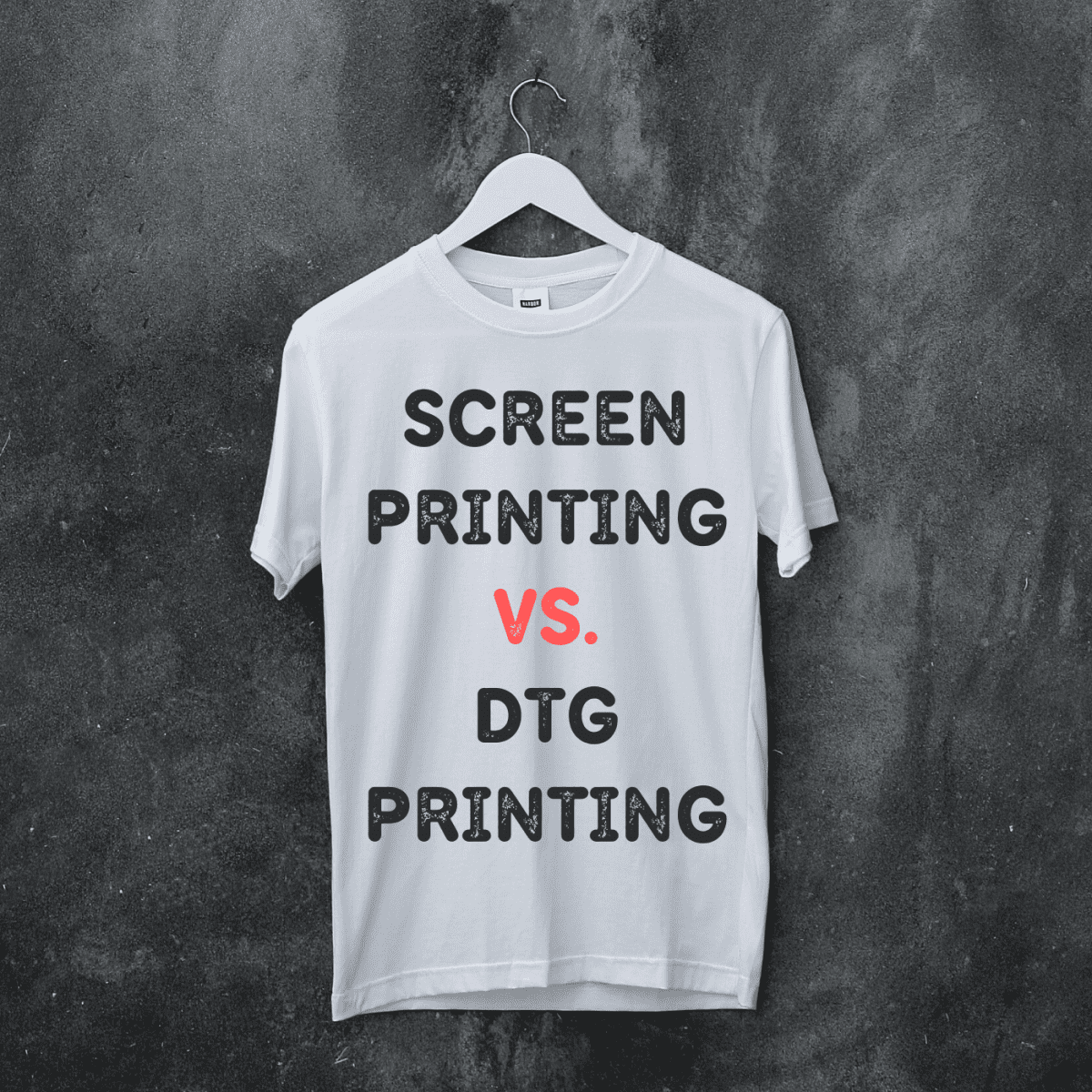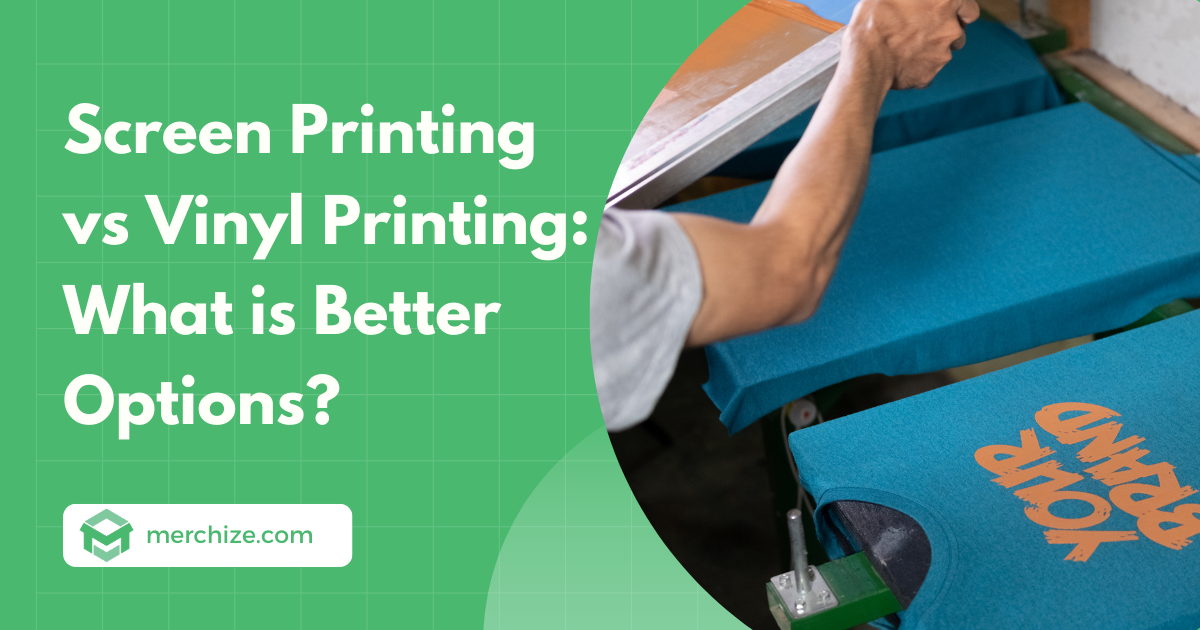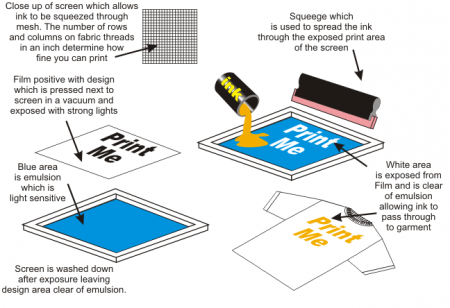Get This Report on Tx Tees
Get This Report on Tx Tees
Blog Article
Not known Details About Tx Tees
Table of ContentsSome Known Questions About Tx Tees.What Does Tx Tees Do?The Single Strategy To Use For Tx TeesUnknown Facts About Tx TeesTop Guidelines Of Tx TeesThe 10-Second Trick For Tx TeesFascination About Tx Tees
Include up various other prices, like the number of utilities it takes to run the shop and the expense of ink and solution per design. Take the print listed below.The solution should just be a couple of cents since you 'd just require to layer one display for this task. Usually, printers try to make up to 45% revenue on a print job.

With DTF, you can publish a handful of shirts, or simply one. Utilize the same calculator as the section over to calculate just how much profit you would certainly make utilizing DTF transfers. Contrast the prices and earnings to whichever approach talks best to your arrangement and process. Both screen printing and DTF have their particular niches on the planet.
What Does Tx Tees Mean?
The best method to know? Ask about and see what printing shop like your own are doing. custom monograming. Try both out and see which you like much better
When you're picking what sort of printing technique to make use of for printing your art work styles on your garments, it is essential that you understand the differences in between these two techniques so you can make the most of results while minimizing prices. Screen printing is one of the most typically used technique for printing layouts on textiles.
DTG printing is additionally called spot or straight to garment printing due to the fact that it prints just what is required rather than making a display as display printers do. https://txtees02.square.site/. Display printing functions by screen filler squeegee display printing ink screen mesh display, then transferring the image to garment utilizing warm and/or pressure
The DTG printer makes use of special dye-sublimation inks that are applied right into a pre-designed image by an electronic printing system. The inks enter into the material, enabling vivid shades and exceptional detail. It's also referred to as place or straight to garment printing due to the fact that it publishes just what is needed rather of making a display as screen printers do.
Tx Tees Fundamentals Explained
First, it's much faster - you can print a fullcolor picture in mins, rather than hours for display printing. Second, there's no set up time or costs entailed - you can print any kind of layout you such as, without having to produce a screen. Third, there's no waste - because screen printers display print one layout each time, they have to evaluate each color independently.
The paper is really costly and can just be used as soon as. Once it's published on, it has actually to be thrown out. - The preliminary purchase rate is reduced than the ahead of time financial investment of DTG printers- You can publish multi-color styles one screen at once instead of having to print each shade separately like DTG printing.

3 Easy Facts About Tx Tees Described
However, rather than using display mesh as screen printers do, color sublimation printers make use of laser technology to transfer your pictures onto garments or paper. A warmth procedure transfers the dye from its solid-state directly into the gas phase which subsequently merges it onto material substrates when they are quickly heated up to high temperatures under high pressure.
Sublimation printing is environment-friendly. It makes use of much less water than screenprinting, and because it does not entail using hazardous solvents, it's risk-free for all sorts of apparel. The color sublimation inks are also unsmelling when treated, unlike screen printers that utilize hazardous chemicals during the display printing procedure that leave behind an unpleasant odor.
They also save cash on expensive tools like direct exposure units since dye sublimation printers do not need a UV exposure system or a flash treatment stove that is generally utilized in display printing (screen printing shop). What is direct to garment printing (DTG Printing)? DTG printing is a digital screenprinting procedure that prints directly onto fabric making use of specialized inkjet printers
The Tx Tees PDFs
DTG printing uses several advantages over conventional screenprinting, consisting of the capacity to publish photographic quality photos, higher shade vibrancy, and the ability to print layouts on darker textiles. DTG printers function by heating up the fabric ink until it becomes a gas. The gas then penetrates the textile, bonding with the fibers to produce a long-term print.

Screen printers merely prepare their display then begin publishing up until they run out of product or ink.- There is a wide variety of knowledgeable display printers all over the globe, which can be practical for newbies. - It's a slower procedure - screen printers often have to wait on the ink to completely dry before they can publish the following color- Screen printers require hand-operated labor, so there's a higher knowing contour and it takes longer to produce a top quality layout- Screen printing isn't as precise as DTG printing, so you may get some "blood loss" of shades from one component of the image onto an additional otherwise done properly.
Not known Details About Tx Tees
Rather of utilizing display mesh as display printers do, dye sublimation printers make use of laser modern technology to transfer your images onto garments or paper. A warmth procedure transfers the color from its solid-state straight right into the gas phase which in turn integrates it onto fabric substrates when they are swiftly heated to high temperature levels under high stress.
Sublimation printing is environmentally friendly. It utilizes less water than screenprinting, and because it doesn't entail the usage of damaging solvents, it's secure for all sorts of apparel. The color sublimation inks are additionally unsmelling when healed, unlike screen printers that make use of unsafe chemicals during the screen printing process that leave an unpleasant smell.
They additionally conserve cash on costly tools like exposure systems considering that color sublimation printers don't need a UV exposure system or a flash remedy oven that is typically made use of in display printing. What is direct to garment printing (DTG Printing)? DTG printing is an electronic screenprinting process that publishes directly onto textile using specialized inkjet printers.
The Definitive Guide for Tx Tees
DTG printing uses numerous benefits over typical screenprinting, including the ability to print photo top quality images, better shade vibrancy, and the capability to print designs on darker materials. DTG printers work by heating up the fabric ink until it transforms right into a gas. The gas then permeates the fabric, bonding with the fibers to develop a long-term print.
Report this page